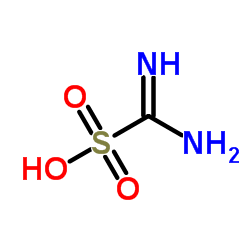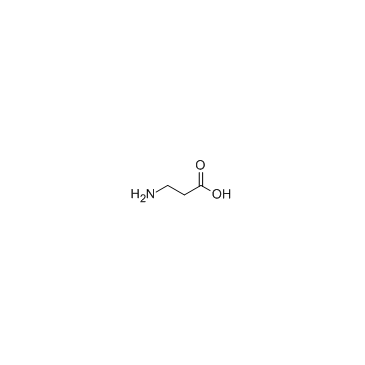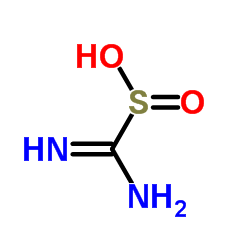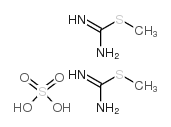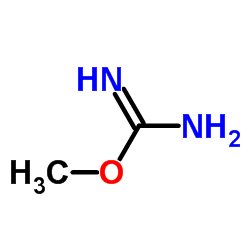353-09-3
| Name | 3-guanidinopropanoic acid |
|---|---|
| Synonyms |
EINECS 206-530-0
3-(diaminomethylideneamino)propanoic acid n-carbamimidoyl-|A-alanine beta-Guanidinopropionic acid 3-Guanidinopropanoate 3-carbamimidamidopropanoic acid N-Carbamimidoyl-β-alanine N-(Aminomethyl)-β-alanine MFCD00045939 Guanidinopropionic acid 3-Guanidinopropionic Acid β-Guanidinopropionic acid b-Guanidinopropionate 3-Guanidinopropanoic acid 3-guanidinepropionic acid |
| Description | RGX-202 is an oral small-molecule SLC6A8 transporter inhibitor. RGX-202 robustly inhibits creatine import in vitro and in vivo, reduces intracellular phosphocreatine and ATP levels, and induces tumor apoptosis. RGX-202 can be used for the research of cancer[1]. |
|---|---|
| Related Catalog | |
| Target |
Human Endogenous Metabolite |
| In Vitro | RGX-202 (10 μM; 96 hours) reduces cell growth, and reveals a nearly complete depletion of phosphocreatine (>99%), greater than 79% reduction in cellular creatine and a substantial (46%) reduction in intracellular ATP levels relative to control cells in hypoxia[1]. |
| In Vivo | RGX-202 (800 mg/kg; p.o. for 35 days) reduces UN-KPC-961 pancreatic tumoral creatine levels in B6129SF1/J mice[1]. RGX-202 (approximately 650 mg/kg; i.p. daily for 14 days) treatment reduces Lvm3b cells liver metastatic colonization by eightfold in NOD-SCID mice[1]. Animal Model: UN-KPC-961 pancreatic tumor-bearing B6129SF1/J mice[1] Dosage: 800 mg/kg Administration: p.o. for 35 days Result: Suppressed tumoral d3-creatine import by 50% at 800 mg/kg. Animal Model: 6- to 9-week-old C57BL/6J male wild-type mice[1] Dosage: 100, 250, 500 mg/KG in sterile 0.9% NaCl Administration: p.o. for 35 days Result: Inhibited tissue uptake of d3-creatine in a dose-dependent manner by up to 75% at 500 mg/kg. |
| References |
| Density | 1.5±0.1 g/cm3 |
|---|---|
| Boiling Point | 299.1±42.0 °C at 760 mmHg |
| Melting Point | 222 °C (dec.)(lit.) |
| Molecular Formula | C4H9N3O2 |
| Molecular Weight | 131.133 |
| Flash Point | 134.7±27.9 °C |
| Exact Mass | 131.069473 |
| PSA | 99.20000 |
| LogP | -1.68 |
| Vapour Pressure | 0.0±1.3 mmHg at 25°C |
| Index of Refraction | 1.575 |
| Storage condition | −20°C |
|
Material Safety Data Sheet
Section1. Identification of the substance Product Name: 3-Guanidinopropionic acid Synonyms: Section2. Hazards identification Harmful by inhalation, in contact with skin, and if swallowed. Section3. Composition/information on ingredients. Ingredient name:3-Guanidinopropionic acid CAS number:353-09-3 Section4. First aid measures Skin contact:Immediately wash skin with copious amounts of water for at least 15 minutes while removing contaminated clothing and shoes. If irritation persists, seek medical attention. Eye contact:Immediately wash skin with copious amounts of water for at least 15 minutes. Assure adequate flushing of the eyes by separating the eyelids with fingers. If irritation persists, seek medical attention. Inhalation:Remove to fresh air. In severe cases or if symptoms persist, seek medical attention. Ingestion:Wash out mouth with copious amounts of water for at least 15 minutes. Seek medical attention. Section5. Fire fighting measures In the event of a fire involving this material, alone or in combination with other materials, use dry powder or carbon dioxide extinguishers. Protective clothing and self-contained breathing apparatus should be worn. Section6. Accidental release measures Personal precautions: Wear suitable personal protective equipment which performs satisfactorily and meets local/state/national standards. Respiratory precaution:Wear approved mask/respirator Hand precaution:Wear suitable gloves/gauntlets Skin protection:Wear suitable protective clothing Eye protection:Wear suitable eye protection Methods for cleaning up: Mix with sand or similar inert absorbent material, sweep up and keep in a tightly closed container for disposal. See section 12. Environmental precautions: Do not allow material to enter drains or water courses. Section7. Handling and storage Handling:This product should be handled only by, or under the close supervision of, those properly qualified in the handling and use of potentially hazardous chemicals, who should take into account the fire, health and chemical hazard data given on this sheet. Storage:Store in closed vessels, refrigerated. Section8. Exposure Controls / Personal protection Engineering Controls: Use only in a chemical fume hood. Personal protective equipment: Wear laboratory clothing, chemical-resistant gloves and safety goggles. General hydiene measures: Wash thoroughly after handling. Wash contaminated clothing before reuse. Section9. Physical and chemical properties Appearance:Not specified Boiling point:No data Melting point:No data Flash point:No data Density:No data Molecular formula: C4H9N3O2 Molecular weight: 131.1 Section10. Stability and reactivity Conditions to avoid: Heat, flames and sparks. Materials to avoid: Oxidizing agents. Possible hazardous combustion products: Carbon monoxide, nitrogen oxides. Section11. Toxicological information No data. Section12. Ecological information No data. Section13. Disposal consideration Arrange disposal as special waste, by licensed disposal company, in consultation with local waste disposal authority, in accordance with national and regional regulations. Section14. Transportation information Non-harzardous for air and ground transportation. Section15. Regulatory information No chemicals in this material are subject to the reporting requirements of SARA Title III, Section 302, or have known CAS numbers that exceed the threshold reporting levels established by SARA Title III, Section 313. SECTION 16 - ADDITIONAL INFORMATION N/A |
| Symbol |

GHS07 |
|---|---|
| Signal Word | Warning |
| Hazard Statements | H315-H319-H335 |
| Precautionary Statements | P261-P305 + P351 + P338 |
| Personal Protective Equipment | dust mask type N95 (US);Eyeshields;Gloves |
| Hazard Codes | Xi:Irritant; |
| Risk Phrases | R36/37/38 |
| Safety Phrases | S26-S36 |
| RIDADR | NONH for all modes of transport |
| WGK Germany | 3 |
| RTECS | AY3157500 |
| HS Code | 2925290090 |
|
~75% 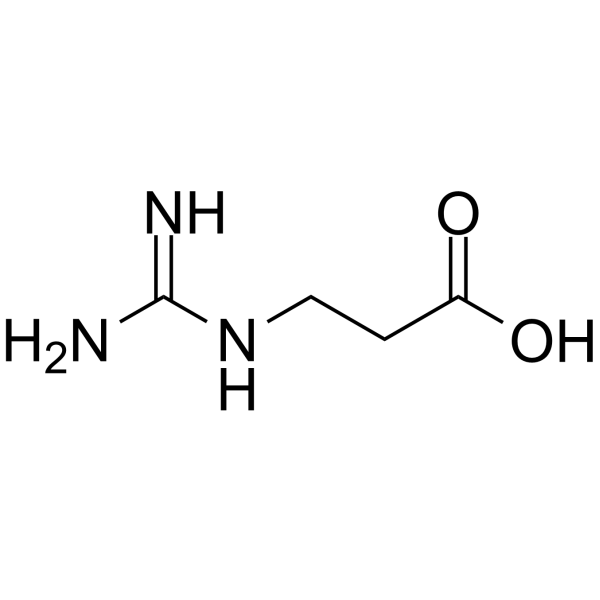
353-09-3 |
| Literature: Synthesis, , # 9 p. 777 - 779 |
|
~74% 
353-09-3 |
| Literature: Synthesis, , # 12 p. 1656 - 1658 |
|
~% 
353-09-3 |
| Literature: Journal of Molecular Biology, , vol. 396, # 4 p. 870 - 882 |
|
~% 
353-09-3 |
| Literature: Bulletin de la Societe Chimique de France, , p. 182 |
|
~% 
353-09-3 |
| Literature: Zhurnal Obshchei Khimii, , vol. 18, p. 2028 Chem.Abstr., , p. 3793 |
|
~% 
353-09-3 |
| Literature: Chemische Berichte, , vol. 8, p. 1263 |
|
~51% 
353-09-3 |
| Literature: Tetrahedron Letters, , vol. 43, # 8 p. 1401 - 1403 |
| HS Code | 2925290090 |
|---|---|
| Summary | 2925290090 other imines and their derivatives; salts thereof。Supervision conditions:None。VAT:17.0%。Tax rebate rate:9.0%。MFN tariff:6.5%。General tariff:30.0% |
